Remember what the future was supposed to be like?
How does that future compare to today? As the GVU Center celebrates over 25 years, this exhibition highlights some of the research milestones of GVU’s rich contributions.
We are living in the future! This is how we got here.
GVU TIRE TRACKS
Beginning in 1995, the National Academies has published a report that describes the important role of academic and industry research in fueling the IT industry. A graphic in that report, called “Tire Tracks” because of its appearance, made the compelling case that the IT industry is far from self-sufficient and , instead, builds on years, or even decades of academic and industry research.
Throughout this page we display a version of GVU “Tire Tracks”, depicting the tremendous impact of GVU research over its 25-year history. Red tracks illustrate accomplishments in GVU while blue and green tracks depict adoption and extension of these ideas and technologies in industry research and commercial industry respectively.
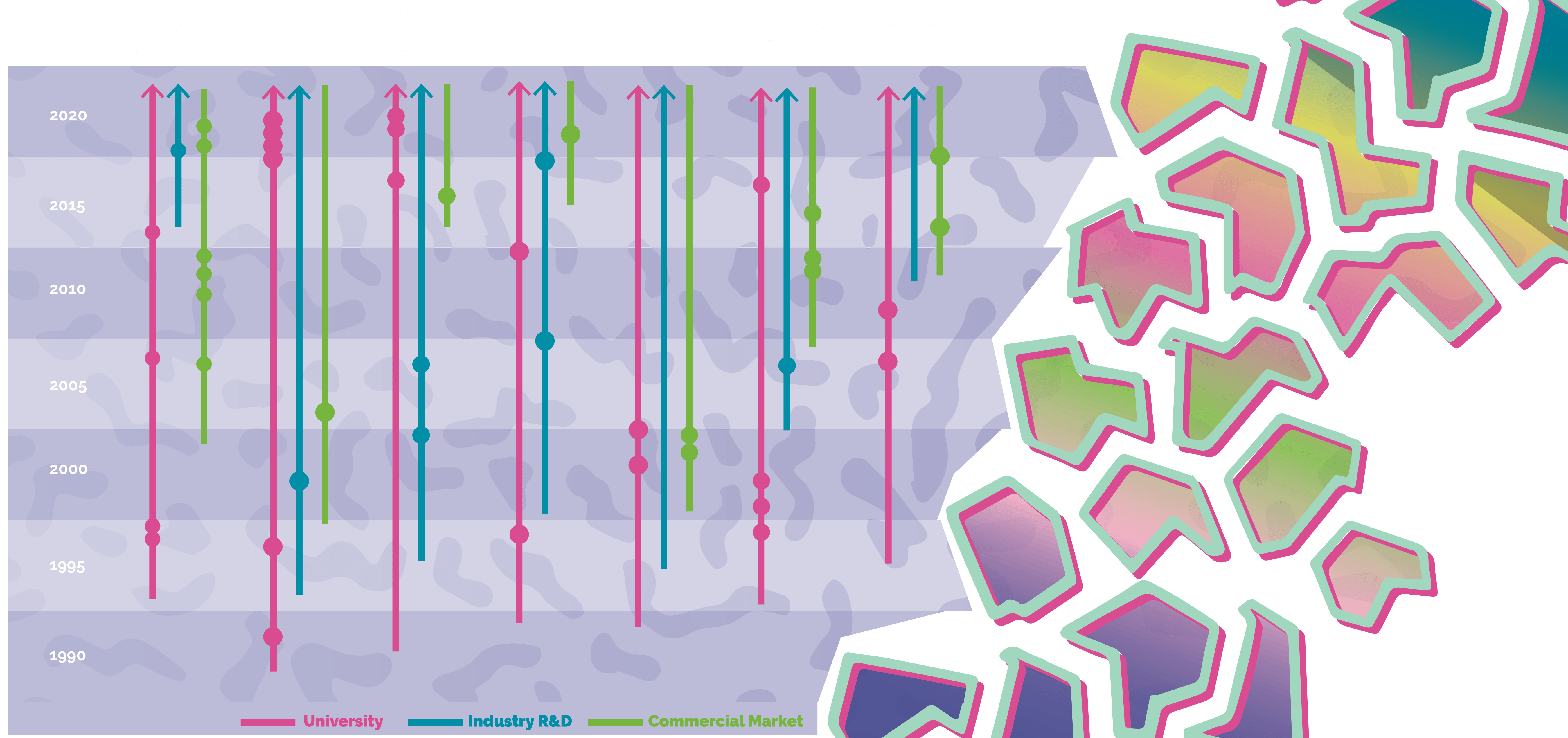
GRAPHICS & ANIMATION
GVU began as the Graphics Visualization and Usability Center. Early work in computer graphics and animation paved the way for collaborations with industry and fostered the transdisciplinary nature that makes the GVU center so successful today.
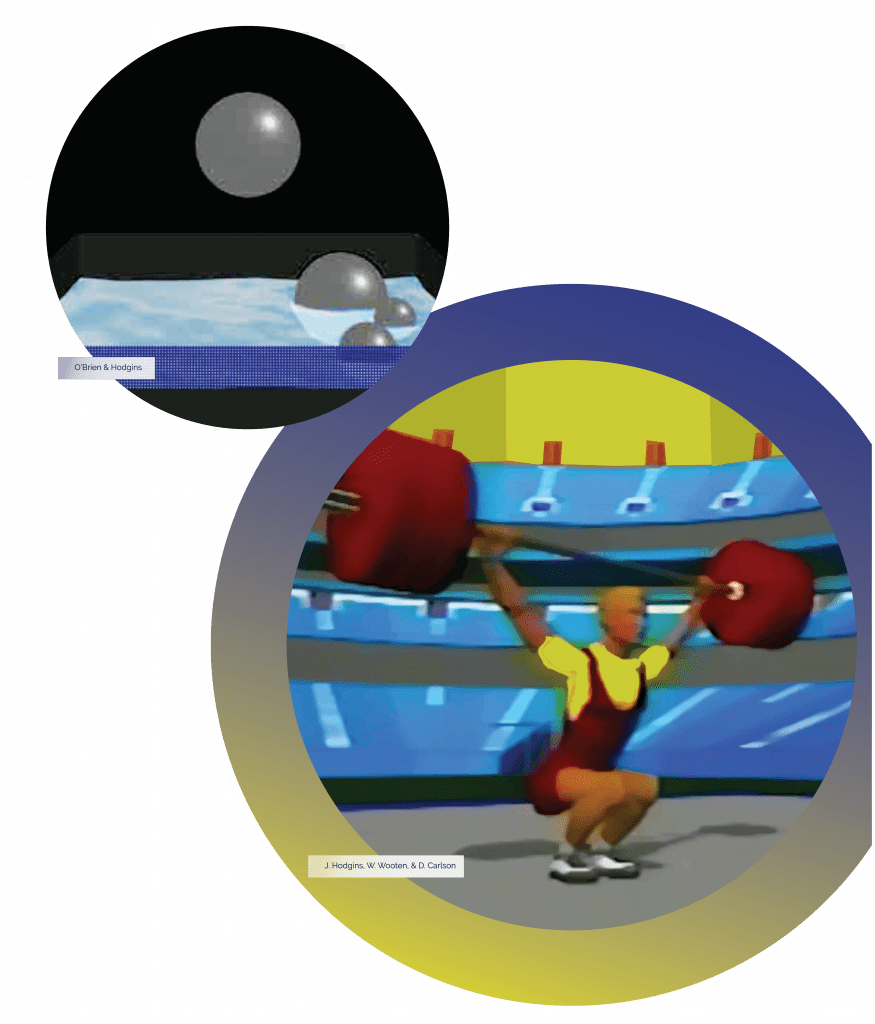
TIRE TRACK
Because of GVU’s origins in graphics visualization, it has exerted a large impact in domains like the movie industry. Some of GVU’s contributions have been for the development of computational techniques to simulate the movement of solid and flexible materials in realistic ways. This work earned a Technical Achievement Oscar and these techniques have been used in numerous movies. Additionally, this work has been adapted and incorporated into several commercial products such as Adobe, Hoops3D and Google’s Draco.
UBIQUITOUS COMPUTING
Not so long ago, computers used to take up a whole room. Now there might be 100 in a room in the form of smart appliances and sensors – computers really are everywhere! The GVU Center fostered projects like the Aware Home to help understand how ubiquitous computing might affect our lives and make them better.
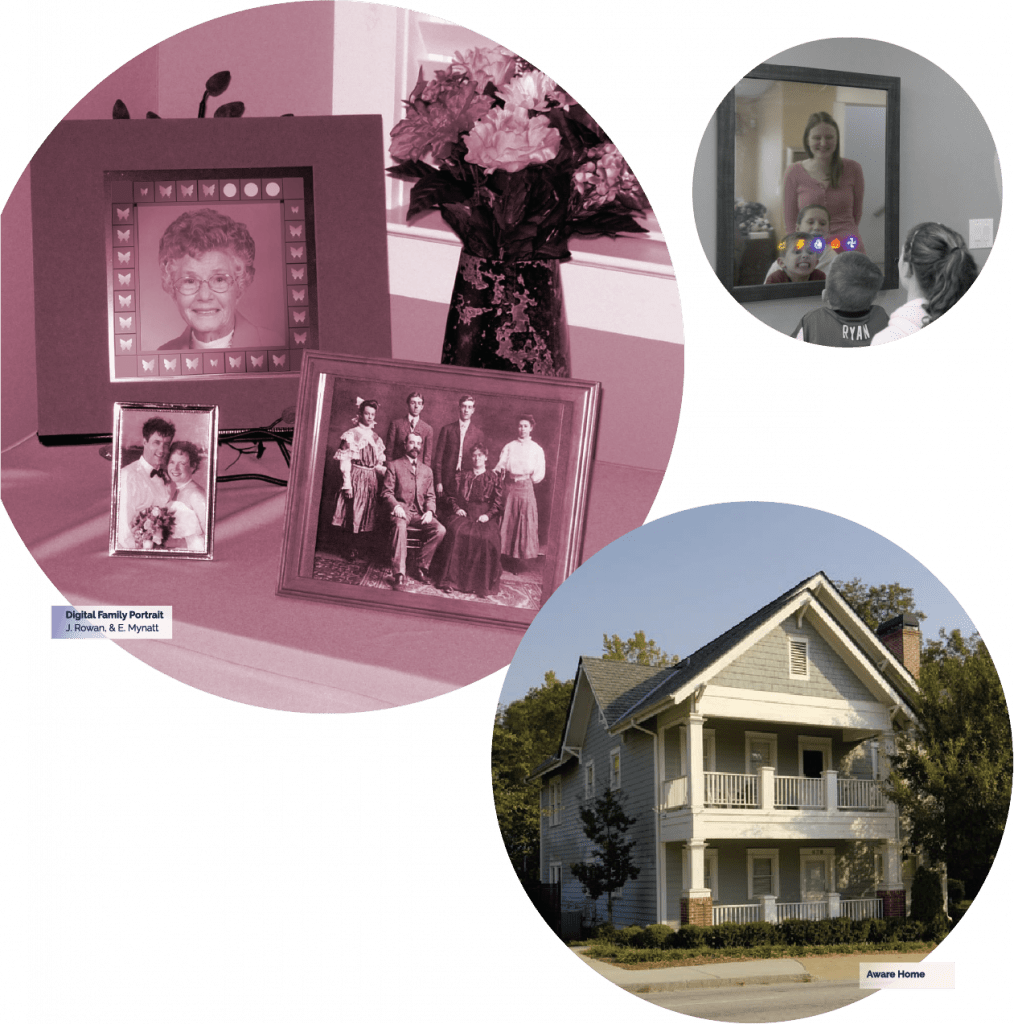
TIRE TRACK
Ubiquitous computing bridges the physical and digital worlds through the pervasive availability of technology seamlessly integrated into everyday places. GVU’s focus in this research space have been on novel sensing and communication techniques, as well as applications to support quality of life and independence for older adults living at home. The Aware Home has been a prolific testbed launching several startups and new technologies designed to support common live, work and play activities.
AUGMENTED REALITY / VIRTUAL REALITY
Not too long ago reality was enough.
But not anymore! The GVU Center has been at the forefront of creating new virtual worlds for work and play, while augmenting the world we live in with useful virtual information.
GVU collaborations enabled artists and designers to use familiar tools to change reality!
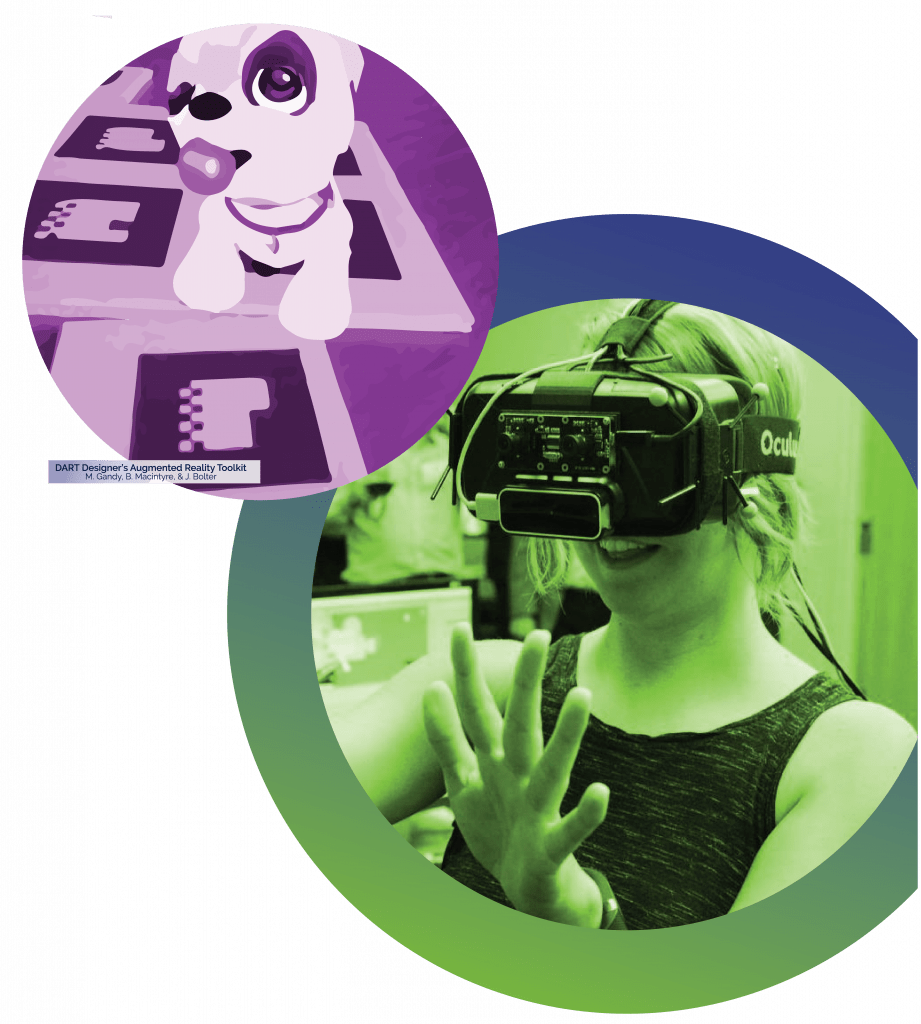
TIRE TRACK
GVU’s early work into augmented reality (AR) and virtual reality (VR) explored its impacts in a variety of domains like health, education, and entertainment. Both AR and VR have been successfully used to train medical professionals, and has been used in exposure therapies to help people conquer phobias and past traumatic experiences. From GVU research have come commercial products in VR therapy, as well as commercial VR/AR tools so people can build their own virtual experiences.
WEARABLE COMPUTING
Remember when you had to dial in through a modem on a desktop computer to access information? Now with smart watches, Google Glass, and other mobile devices we are able to wear our computers everyday and everywhere. One way that GVU Center researchers have helped make this possible is by studying how humans can best interact with wearable technology.
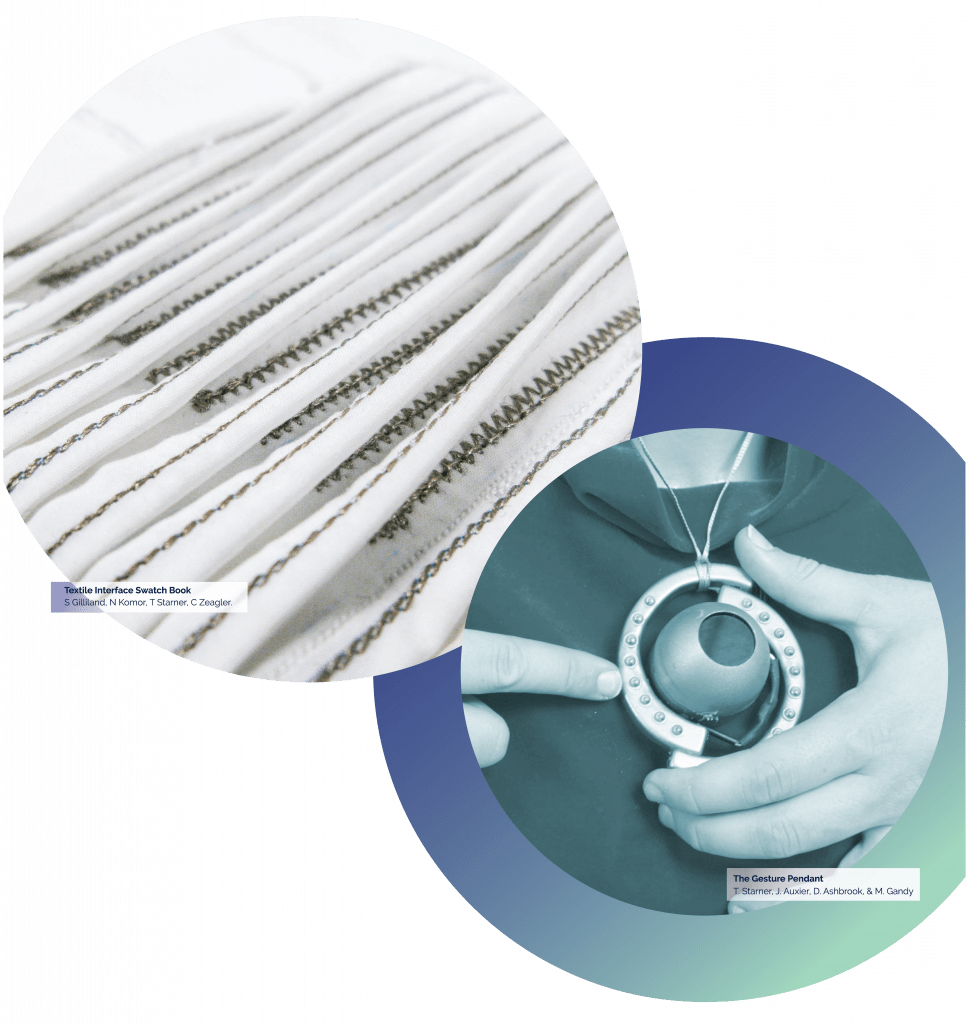
TIRE TRACK
Wearable computing aims to augment the physical body with miniature electronic devices that can be worn on the skin or be integrated into clothing. Dr. Thad Starner has worn a computer on him since the early days of the GVU Center and was the technical lead on Google Glass. The impacts of GVU in this space have been on the appropriate design of and studies in human-computer interactions for head-mounted displays, novel input technologies, military applications, and consumer wearables.
VISUALIZATION & VISUAL ANALYTICS
There was a time when information was only conveyed through tables of numbers. Now we are so used to being presented with beautiful infographics and cleverly mapped-out information that we forget how much thought and research goes into creating those visualizations. GVU researchers are among the pioneers of this domain.

TIRE TRACK
In a world of increasing amounts of data, it is imperative to have tools that us to make sense of this information, detecting patterns and developing insights that can support smart decision making, whether it is applied to our personal health or a Fortune 500 company. GVU’s early work in data visualization and visual analytics tools resulted in products like Dr. John Stasko’s Jigsaw – a visualization software now used by law enforcement and intelligence communities to make sense of and connect large amounts of data.
USER INTERFACE SOFTWARE
Once upon a time, there was the command line and all interactions with a computer were via the typing of text. Now with Graphical User Interfaces, computers are designed to be used by everyone and not just programmers. Researchers from GVU have been invested in creating engaging and appropriate interfaces for user interaction.
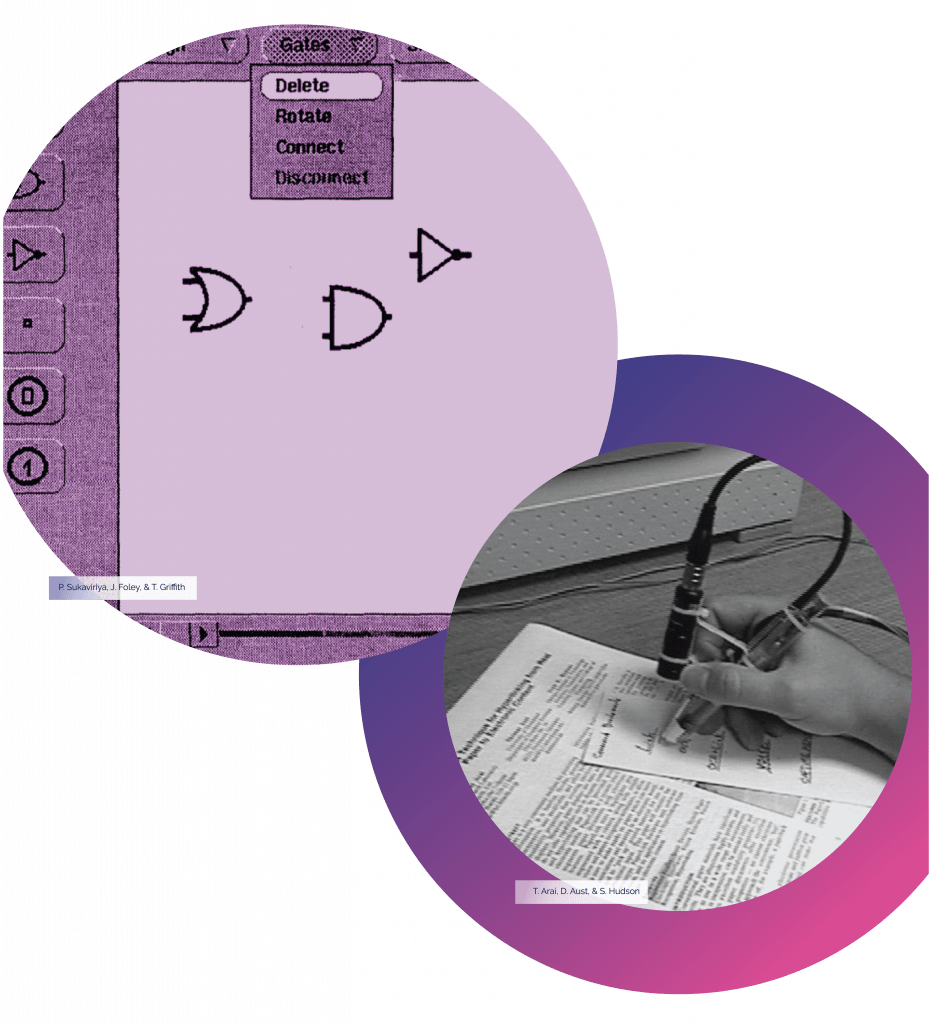
TIRE TRACK
Today, we often take user interfaces for granted. However, the work by GVU pioneered a number of projects to create tools and designs that aid users in using computer systems. Research contributions led to the widespread adoption of industry tools for UI construction and a platform to catalyze the innovation of hundreds of interaction techniques. Projects like Mercator lead to accessible interfaces such as Microsoft’s Active Accessibility functionality.
WORLD WIDE WEB
Before the web was such a vital part of everyday life, GVU Center researchers lead the way in making the web usable and useful. Before the days of Google, GVU colleagues made one of the first surveys of the web, pioneered the use of wikis, and foresaw the future of the web as a source for news.
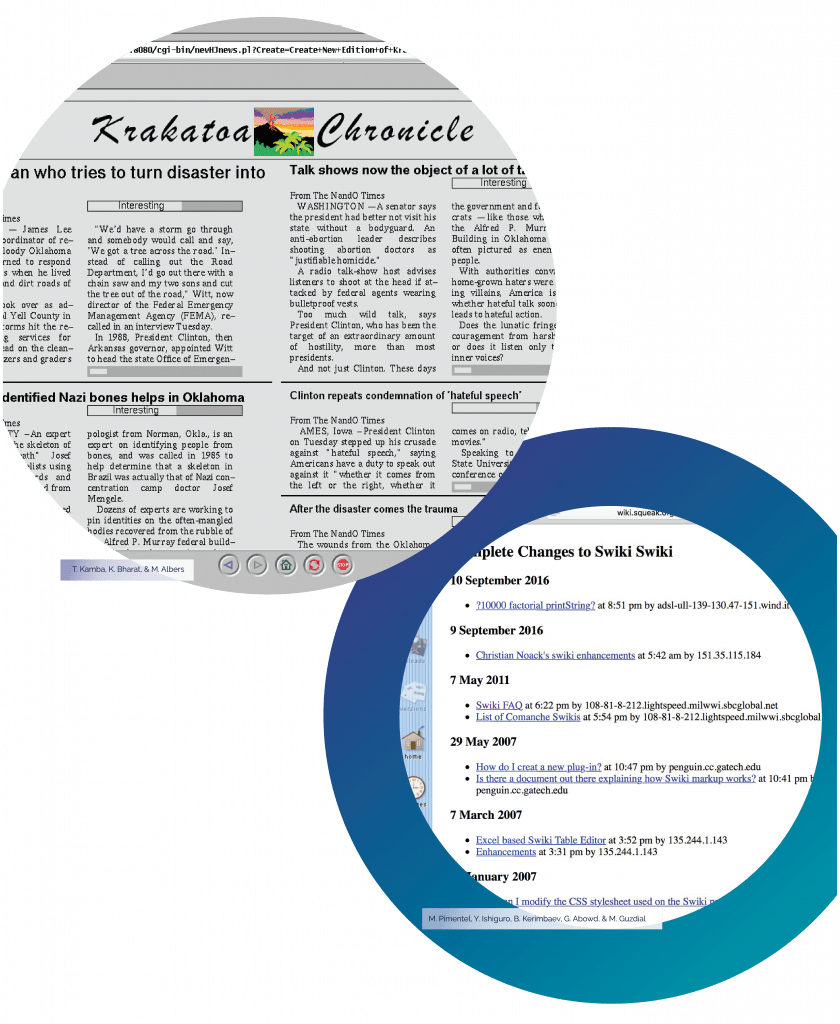
TIRE TRACK
Web and Social Computing synergistically strives to describe and invent new ways for people to connect and communicate via the World Wide Web (WWW). GVU was home to the first WWW surveys to describe its use and growth. Early research in web aggregation techniques planted the seeds for Google News and early research in collaborative web applications forecasted sites like Wikipedia and other modern web-based collaboration technologies.
